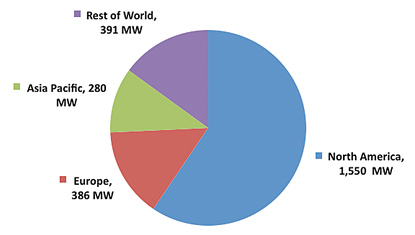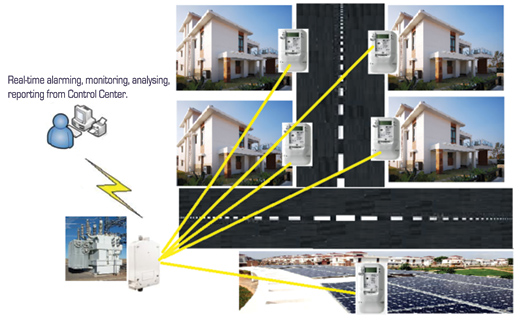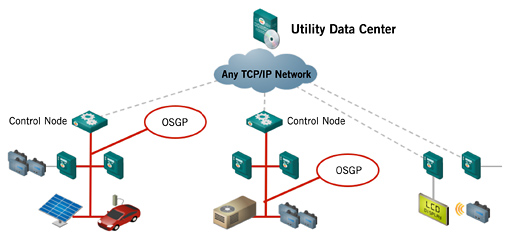Pike Research says that interest in micro grids is growing internationally.
According to a new report from the company, micro grid capacity worldwide will experience a compound annual growth rate (CAGR) of more than 22% over the next five years, reaching 4.7 gigawatts by 2017. Micro grids are integrated systems in which distributed energy resources (DERs) operate as a single, autonomous grid either in parallel to or isolated from the existing utility power grid. They offer customers and distribution utilities a host of new ways to bolster reliability and manage variable, bidirectional resources. In addition, their smaller scale results in far fewer line losses, a lower demand on transmission infrastructure, and the ability to rely on more localized sources of power generation. All of these benefits are stimulating increased demand for micro grids on a worldwide basis. Notably, micro grids have seen tremendous growth in a range of application scenarios including campus environments, military operations, remote/off-grid settings, community/utility systems, and commercial and industrial markets.

Micro Grid Capacity by Region, World Markets: 1Q12
Source: Pike Research
“Several new players have recently entered the micro grid market, signaling that a new race is on to take advantage of the significant opportunity that micro grids represent on a worldwide basis,” says senior analyst Peter Asmus, Pike Research. “Most notably ABB, the Swiss industrial giant that is a leading player in transmission and distribution infrastructure, and Boeing, the veteran defense contractor that is engaging with Siemens in a strategic alliance to serve the U.S. military, as well as San Diego Gas & Electric – one of the leading utilities in this space – and Green Energy Corporation, which is addressing the interoperability of various controls and communications platforms being deployed for micro grids.”
Even though they provide tremendous benefits, micro grids still face significant barriers to wide scale adoption. Today, not a single national government has developed an integrated or comprehensive policy creating a viable, vibrant market for customer-driven micro grids. With the exception of Denmark, few countries are even examining the complex policy issues involved when aggregating DERs not owned by utility companies on a broad scale. While North America is still clearly the leader in terms of planned capacity, the developing world remains the most promising long-term market.
The energy sector is of vital importance in the developing countries that have limited access to energy sources. Demand often exceeds supply in high-growth developing countries. Moreover, the grid infrastructure is often old and prone to technical and non-technical losses. In these circumstances, incorporating micro grid concepts can provide a modicum of stability in emerging countries. Two case studies in India and South Africa illustrate the value of integrating distributed generation to compensate for disruptions in utility-supplied power.
The Palm Meadows Community, India
The Palm Meadows Community in Hyderabad, India is an 86-acre integrated gated community with 335 homes and residential services.
The Palm Meadows community ties into the grid at a dedicated substation and sources energy in bulk from the utility. The community also runs diesel generators and will incorporate solar generated rooftops in the future that will feed energy back into the grid, creating a solar infrastructure with payback options. Residences within the community are equipped with Echelon’s Open Smart Grid Protocol (OSGP)-compatible smart meters that connect into data concentrators at distribution transformers and feed near real-time usage information to the Echelon Networked Energy Systems (NES) system software.

Grene Robotics’ Skynet Management Application automatically turns on local generation if utility-delivered power is inadequate. The Skynet software interfaces with the NES system software and creates a bill for the customer that reflects the actual use of lower cost grid power and more expensive locally generated power. The residences now have the option of reducing usage at times when the more expensive energy is being supplied. And today, the Palm Meadows micro grid is providing reliable service even during frequent utility grid outages and are enabling the residences to make intelligent trade-offs between comfort and cost. The deployment of solar powered roofing will also help reduce overall costs in the future.
Kiran Penmatcha, CEO of Grene Robotics said of the recent deployments, “Like a national power grid, the Palm Meadows micro grid manages generation, distribution, and the regulation of the flow of electricity to its households. Today, the community is evaluating the integration of solar generated electricity for the future. Tomorrow, the community may look to add other applications, such as outdoor lighting control on the same infrastructure.”
Clearwater Mall, South Africa
The frequency and length of blackouts in South Africa can have devastating effects on its commercial sector. For example, the local South African public utility had to institute a system of rolling blackouts over a period of four months to balance electricity demand, in which supply was interrupted at least once or twice a day lasting an average of four hours per outage.
The tenants at the Clearwater Mall, consisting of nine anchor stores and hundreds of local and international fashion stores, fast food outlets, restaurants, banks, electronic goods and other specialty stores, require reliable electricity for business continuity. Electric energy has a direct and immediate impact on revenue for these tenants. Without electricity, businesses will suffer and the livelihoods of the workers and consumers will be impacted.
The mall’s new retail micro grid solution, based on Echelon partner PMT’s Metering online energy management application, employs Echelon’s OSGP-compatible smart meters, data concentrators, and NES system software to sub-meter individual tenant energy usage. This allows tenants to pay only for their actual energy usage rather than the industry norm of paying for energy on a square footage basis. Tenants can now opt-in to power supplied by local back-up generation when blackouts occur, and the Clearwater Mall can track billing by energy source and allocate tariffs based on actual use.
Such micro grids are likely to be a best practice in developing countries grappling with intermittent power supply, and are also applicable in environmentally conscious countries that are aggressively incorporating renewable and intermittent energy sources into the distribution network.
Open Standards for Micro Grid Deployments Prevent Vendor Lock-In and Increased Costs Utility of facility managers who are considering a micro grid should look to implement a standards-based and multi-application infrastructure and avoid vendor lock-in. OSGP is one such standard.

OSGP is a family of standards published by the European Telecommunications Standards Institute (ETSI) optimized for smart grid applications, and enabling independent implementation of interoperable meters and other smart grid devices from multiple vendors on the same network. Built on open ISO/IEC and IEEE standards, OSGP adds additional security and reliability services necessary to properly network and manage devices in the smart grid. As applications are deployed, such as point-of-use monitoring and control of power usage, OSGP enables utilities to reduce peak loads and pass on energy cost savings to consumers. With OSGP-compliant solutions, utilities or facility managers can avoid vendor lock-in and purchase best-in-class products to achieve better ROI.
Conclusion
Micro grid deployments have helped the Palm Meadows Community and the Clearwater Mall achieve their specific local goals, including providing reliable energy and a reduction in carbon emission. These micro grid implementations have also provided value to their consumers.
The concepts and implementations have demonstrated results in India and South Africa. They have the ability to be replicated worldwide in order to improve power reliability and to integrate renewable generation. Micro grids can be a driving force for a more sustainable environment.
About the Authors
 Varun Nagaraj brings more than 20 years of high-tech product planning and strategy success and experience to Echelon. Varun was the CEO of NetContinuum (acquired by Barracuda Networks), served as EVP of Marketing and Customer Operations for Ellacoya (acquired by Arbor Networks), and was a VP of Product Management and Marketing at Extreme Networks. He was previously a partner at PRTM, a leading management consulting company focused on product and operations strategy. Varun started his career with HP. He received a B.S.E.E. from IIT Bombay, M.S. in Computer Engineering from North Carolina State University, and MBA from Boston University.
Varun Nagaraj brings more than 20 years of high-tech product planning and strategy success and experience to Echelon. Varun was the CEO of NetContinuum (acquired by Barracuda Networks), served as EVP of Marketing and Customer Operations for Ellacoya (acquired by Arbor Networks), and was a VP of Product Management and Marketing at Extreme Networks. He was previously a partner at PRTM, a leading management consulting company focused on product and operations strategy. Varun started his career with HP. He received a B.S.E.E. from IIT Bombay, M.S. in Computer Engineering from North Carolina State University, and MBA from Boston University.
 Peter Asmus is a senior analyst contributing to Pike Research’s Smart Grid and Smart Energy practices, with a focus on wind energy as well as emerging energy distribution models such as microgrids and virtual power plants. Asmus has 20 years of experience in energy and environmental markets, both as a writer and research consultant.
Peter Asmus is a senior analyst contributing to Pike Research’s Smart Grid and Smart Energy practices, with a focus on wind energy as well as emerging energy distribution models such as microgrids and virtual power plants. Asmus has 20 years of experience in energy and environmental markets, both as a writer and research consultant.







